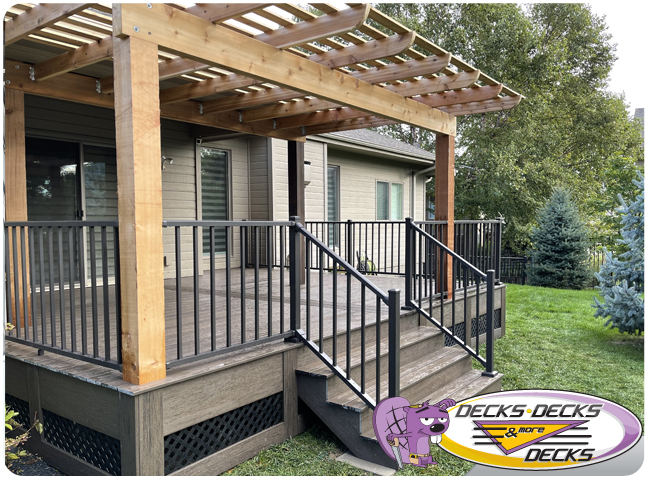What Is Deck Skirting and Why Do You Need It?
Deck skirting is an essential element that enhances both the functionality and aesthetics of your outdoor living space. It involves covering the open space between the deck surface and the ground, providing a finished look and additional benefits.
In this blog, we’ll explore the concept of deck skirting, its various types, the benefits it offers, and why it is a valuable addition to any deck.
Understanding Deck Skirting
Deck skirting refers to the material used to enclose the space beneath a deck. It hides the structural elements of the deck and the gap between the deck and the ground, offering a seamless and polished appearance.
Skirting can be made from a variety of materials, including wood, composite, vinyl, lattice, and stone, each offering different benefits and aesthetic qualities.
Types
Different materials are used for deck skirting, each providing unique advantages. Wood skirting, for instance, offers a natural and classic look that complements wood decking.
It can be painted or stained to match your deck but requires regular maintenance to prevent rot and insect damage. Composite skirting, on the other hand, is known for its durability and low maintenance.
Made from a blend of wood fibers and recycled plastic, it resists rot, insects, and moisture, making it an excellent long-term choice.
Vinyl skirting is another popular option, prized for its weather resistance and ease of maintenance. It comes in various colors to match your deck and home exterior.
Lattice skirting, typically made from wood or vinyl, provides good ventilation, reducing moisture buildup beneath the deck. It also offers a decorative look with various patterns available.
For those seeking a high-end appearance, stone or faux stone skirting provides durability and a sophisticated look, though it tends to be more expensive.

Benefits
Deck skirting significantly enhances the visual appeal of your deck by providing a polished and finished look.
It helps blend the deck with the surrounding landscape, creating a cohesive outdoor space. Beyond aesthetics, skirting offers practical benefits.
It creates additional storage space beneath the deck, perfect for keeping outdoor furniture, gardening tools, and other items out of sight, thus maintaining a tidy yard.
It also serves as a barrier against pests and small animals, preventing them from nesting under your deck and causing damage.
This barrier enhances safety by keeping children and pets from accessing the under-deck area, reducing the risk of accidents from exposed gaps or sharp edges.
Additionally, certain types of skirting, like lattice, allow for proper ventilation, reducing moisture buildup that can lead to mold and mildew growth. This improved airflow helps prolong the lifespan of your deck by protecting it from moisture-related issues.
Moreover, it offers weather protection. It shields the under-deck area from snow, rain, and debris, reducing wear and tear on the deck’s structural components. This added layer of protection helps maintain the integrity of your deck, ensuring it remains sturdy and reliable for years to come.
Why You Need Deck Skirting
Deck skirting is not just an aesthetic enhancement; it provides numerous practical benefits that make it a valuable addition to any deck. It enhances the overall look of your outdoor space, making it more attractive and integrated with your home and yard.
The added storage space and pest control features contribute to a cleaner and more organized outdoor environment, while the protection it offers helps extend the lifespan of your deck, saving you money on repairs and replacements.
By adding deck skirting, you invest in both the beauty and functionality of your outdoor living area. Whether you opt for wood, composite, vinyl, lattice, or stone, skirting transforms your deck into a more cohesive, safe, and durable structure.

